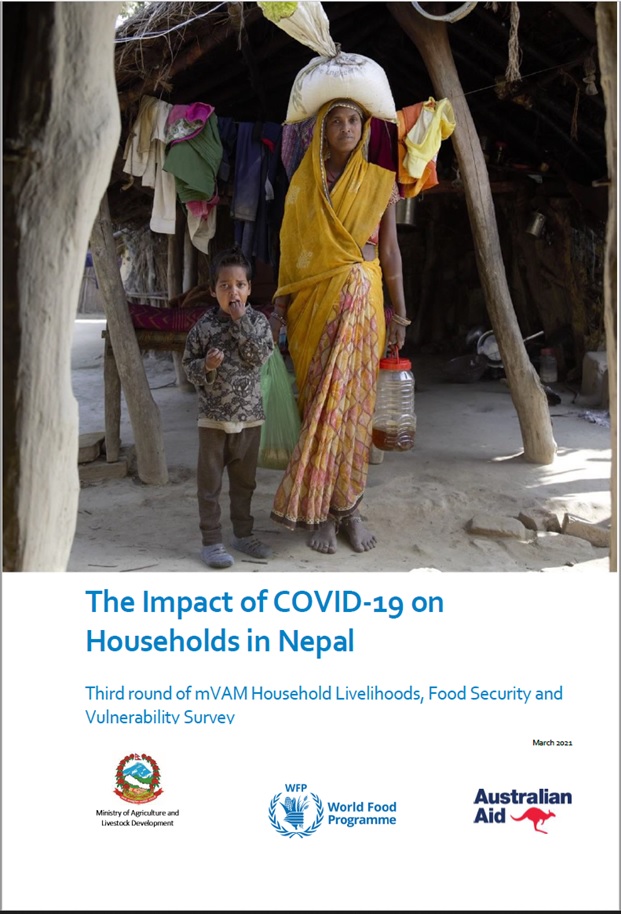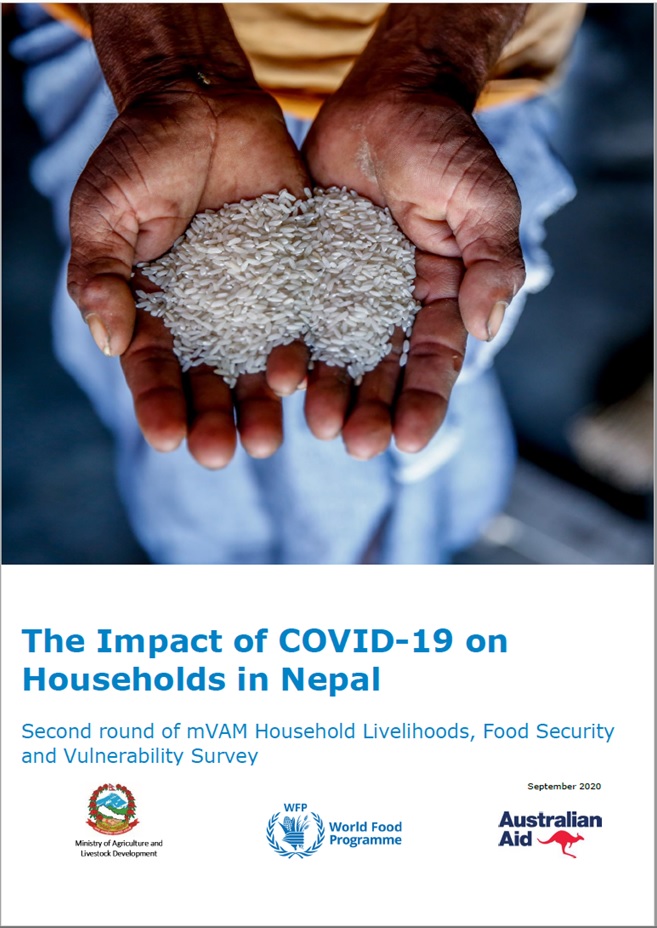Food Security Bulletin No.37

The food security situation has improved significantly compared to the previous quarter (July.September 2012) and the situation is reportedly stable overall according to the NeKSAP District Food Security Networks (DFSNs) of seventy-two districts across the country.
Exceptions were found in twenty-five Village Development Committees (VDCs), mostly in Rukum and Dailekh districts where pocket areas have been classified as \moderately food insecure (Phase-II).. This is attributed to maize crop production failure coupled with limited employment opportunities.
For the rest of the country, the food security situation has improved due to the summer crop harvest and in-creased availability of other income sources: overall household income and purchasing power has increased through sales of high value commodities and a rise in wage rates. The NeKSAP DFSNs reported good sales of high value crops across the country: citrus, ginger, honey, large cardamom, and dairy products in the hills; sug-arcane, fish, nuts, and banana in tarai; and apple and NTFPs (Jatamasi, Katuki, Sugandhawal etc.) in the moun-tains. According to the Nepal Rastra Bank, wage rate index has increased by 29 percent compared to the same period last year.
Despite the overall seasonal improvement in the food security situation, a significant number of population, equivalent to a quarter of rural households, reportedly consume an inadequate diet. Dalits, wage labourers and households in the mountain region have a higher incidence of inadequate food consumption.
A joint crop verification mission of the Ministry of Agricultural Development (MoAD), WFP and FAO reported that the production of main summer crops of Paddy, Maize and Millet has declined by 11.3, 8.3 and 3.0 percent re-spectively compared to last year (2011/12). The total summer crop output for 2012/13 is estimated at 6.8 mil-lion MT: 4.5 million mt for paddy, 2.0 million mt for maize, and 0.3 million mt millet.
Download English Version Download Nepali Version
News & Events
- Brief on the Food Security Situation in Nepal (Mid-July to mid-November 2017)
- Launch of Food Security Information System for Nepal
- Second Advance Estimate of 2016/17 Wheat Production in Nepal using CRAFT
- Brief on the food security situation in Nepal (Mid November 2016 to Mid March 2017)
- Updated NeKSAP guidance on food security response analysis and district food security monitoring

